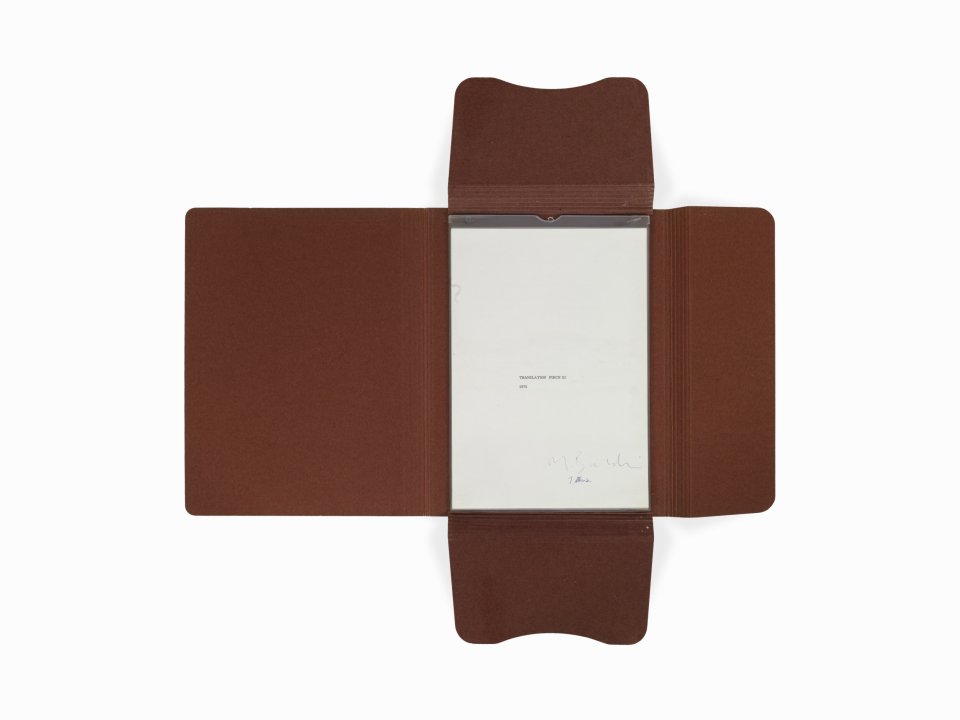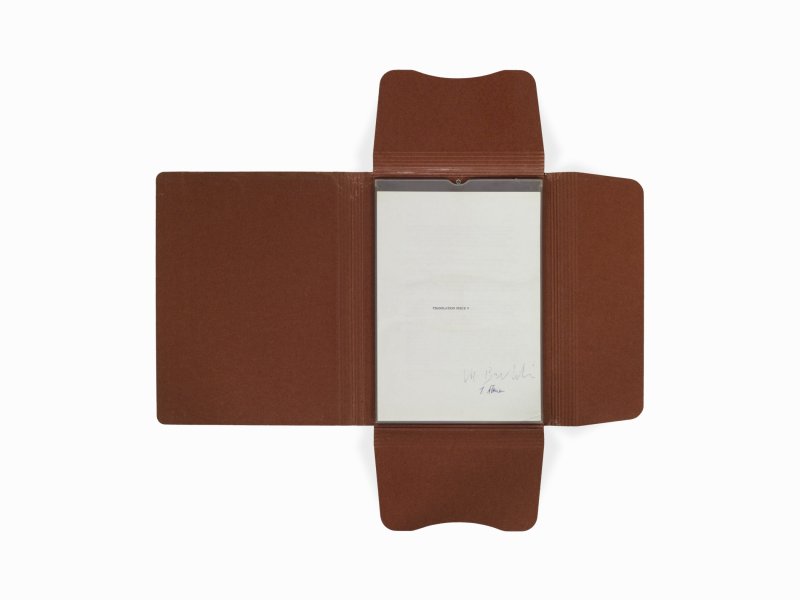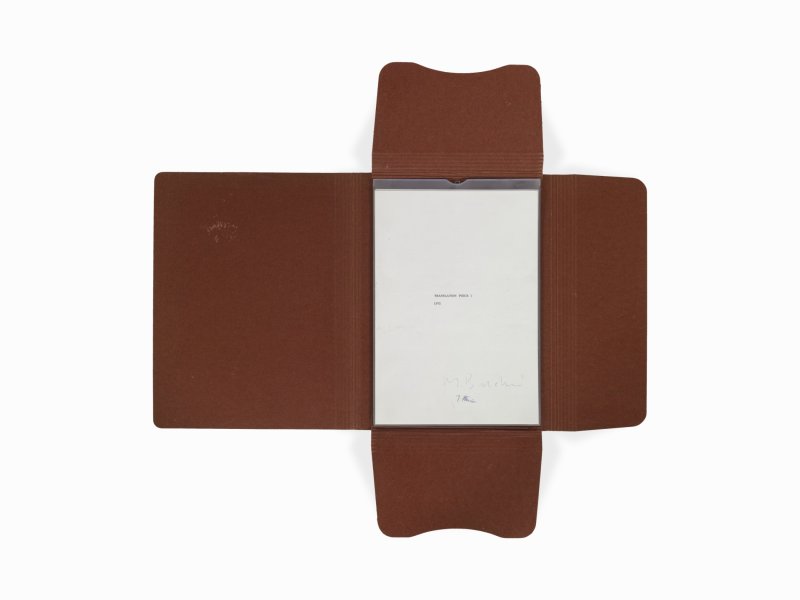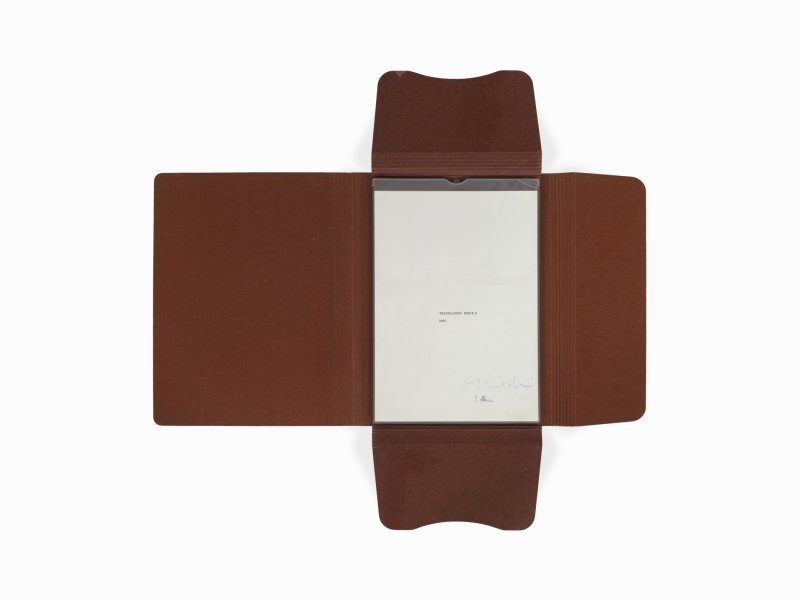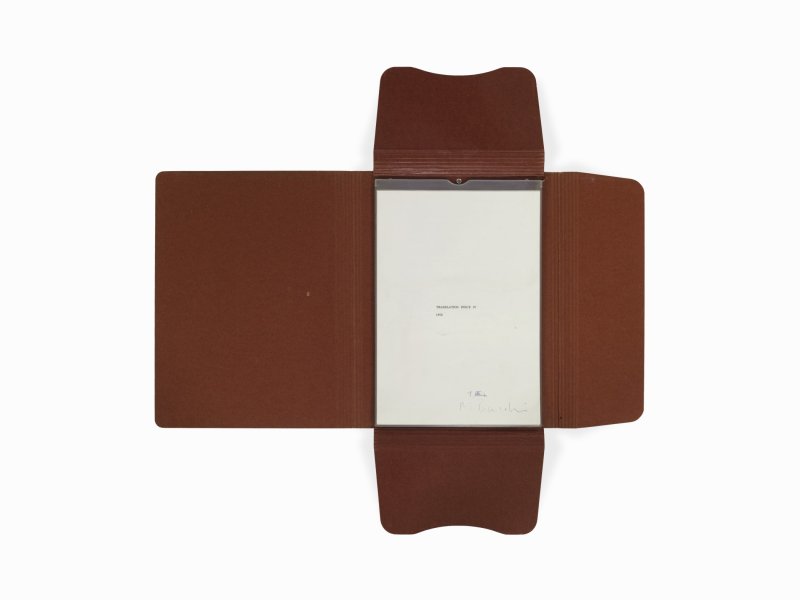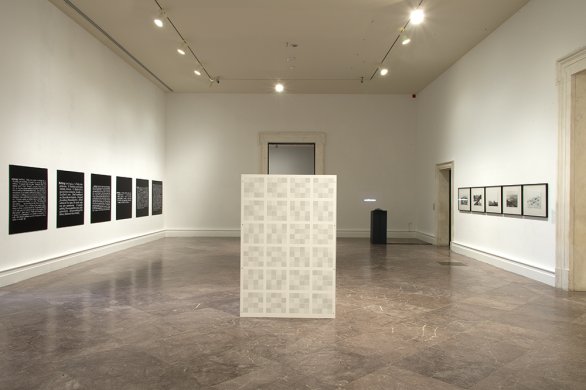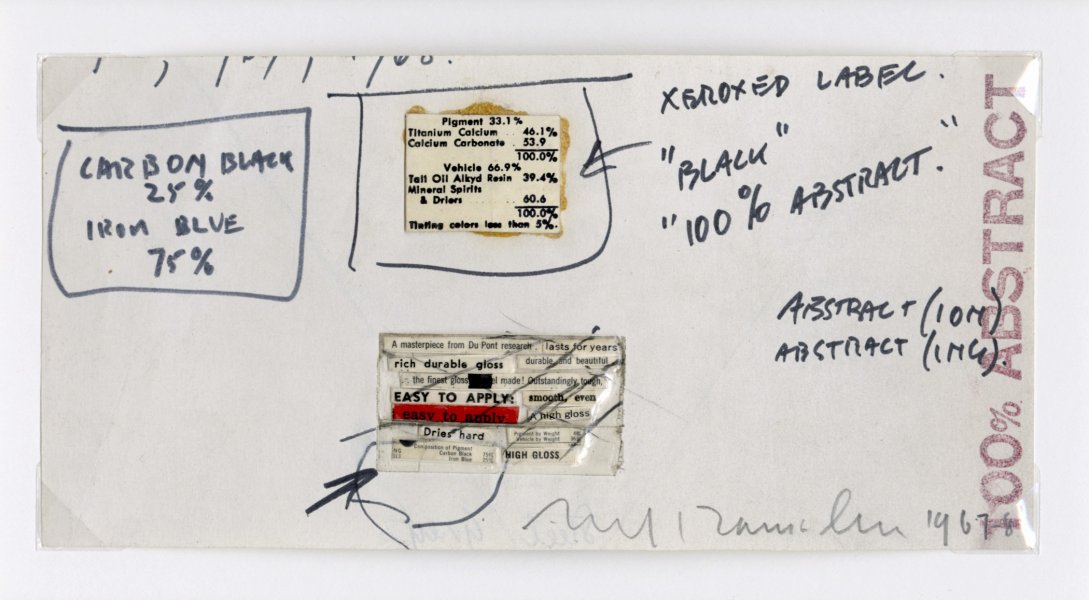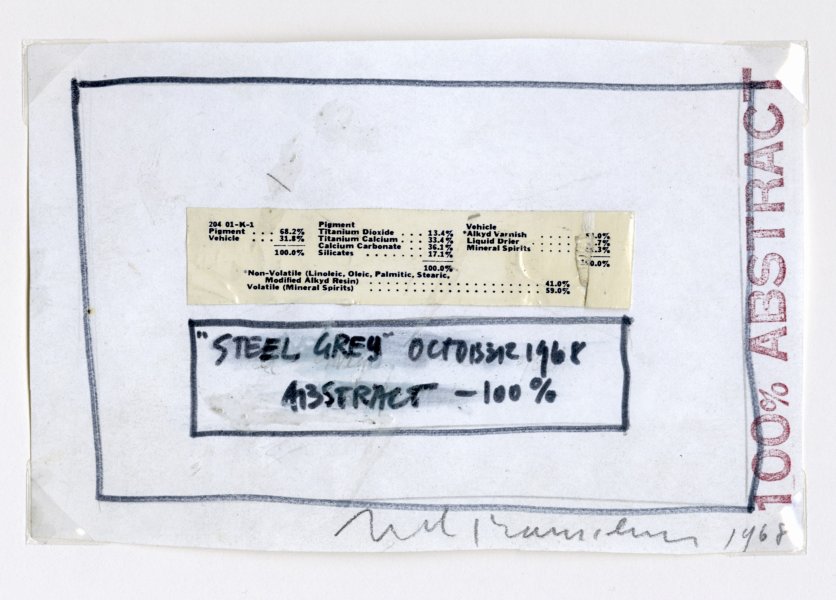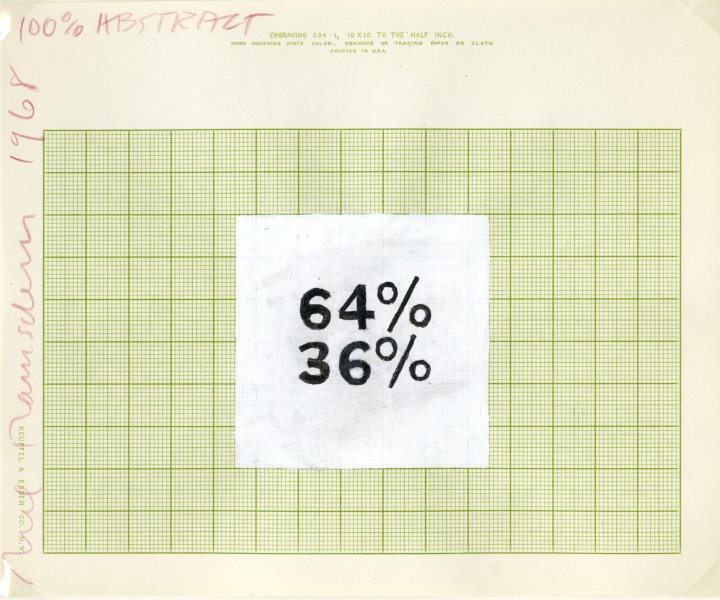Art & Language
British, established 1968
Translation Piece III, 1972
Artwork Details
Materials
portfolio of three typewritten sheets and a cover sheet
Edition:
2/3
Measurements
each (sheet): 12 x 8 inches (30.5 x 22.8 cm)
Collection Buffalo AKG Art Museum
Credit
The Panza Collection and by exchange: George B. and Jenny R. Mathews Fund, Bequest of Arthur B. Michael, Albert H. Tracy Fund and Bequest of John Mortimer Schiff, 2015
Accession ID
P2015:3.8a-e
The art collective Art & Language was founded in 1968. As a group, their practice has alternated between the production of artwork and the writing of philosophical texts on art, many of which were published in their own journal Art-Language. Translation Piece I–V represents both aspects of the collective’s activities. The work is both a series of five short philosophical texts written by Art & Language members Terry Atkinson and Michael Baldwin, and an editioned artwork.
Translation Piece I–V directly addresses one of the key complications of using language as a material for a work of art, what the members of Art & Language term “art language.” While sculptures or paintings communicate in an aesthetic language that is, at least theoretically, legible across linguistic borders, the meaning of or concept behind these artworks can only be communicated using language. Since language relies on translation in order to reach its audiences, mistranslation can easily occur between different speakers who may have different understandings of the same word. As Atkinson and Baldwin note in the fifth statement of Translation Piece, “A description of say a Judd sculpture may be equivalently translatable in English and German—but an . . . interpretation is more problematic.” While the philosophical arguments in Translation Piece I–V seem to only address the pitfalls of language-as-art, they also speak to one of its great strengths: each viewer will develop his or her own personal “translation” or understanding of the work of art.
Label from Looking at Tomorrow: Light and Language from The Panza Collection, 1967–1990, October 24, 2015–February 7, 2016
